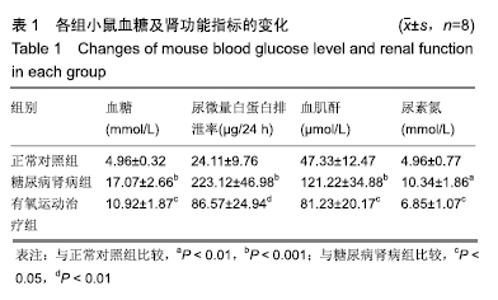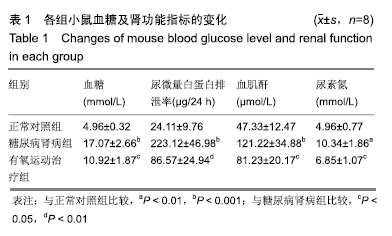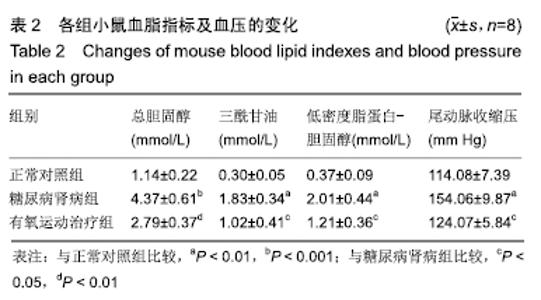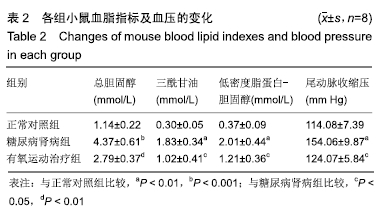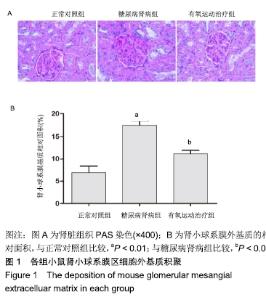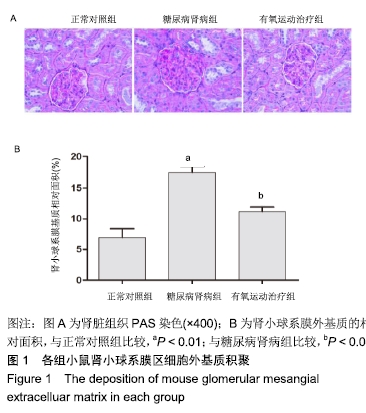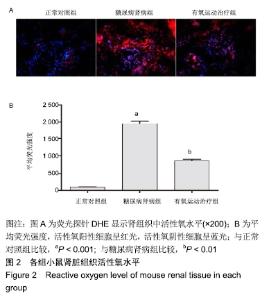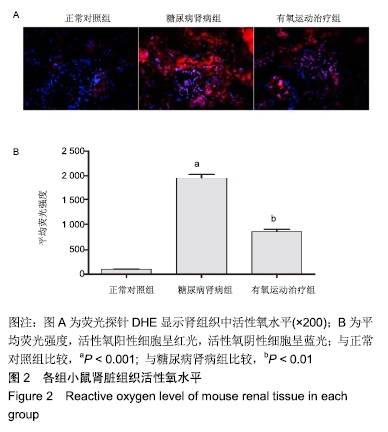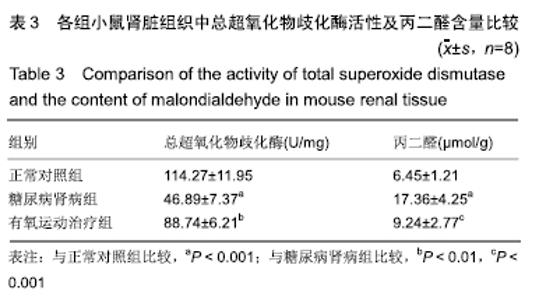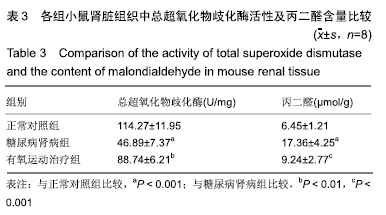[1] SAGOO MK, GNUDI L. Diabetic nephropathy: Is there a role for oxidative stress?.Free Radic Biol Med. 2018;116:50-63.
[2] CHEN X, FANG M. Oxidative stress mediated mitochondrial damage plays roles in pathogenesis of diabetic nephropathy rat.Eur Rev Med Pharmacol Sci.2018;22(16):5248-5254.
[3] KRISTIEN D, ASMIN A, DJALILA M, et al.Oxidative stress in chronic kidney disease.Pediatr Nephrol. 2019;34 (6):975-991.
[4] 王甜甜,陈淳媛,杨雷,等.Nrf2/HO-1信号轴在氧化应激性疾病中的机制[J].中南大学学报(医学版),2019,44(1):74-80.
[5] DE HAAN JB. Nrf2 activators as attractive therapeutics for diabetic nephropathy.Diabetes.2011;60(11):2683-2684.
[6] CHENG D, GAO L, SU S, et al. Moringa isothiocyanate activates Nrf2: potential role in diabetic nephropathy.AAPS J.2019;21(2):31.
[7] 蔡淑兰,贾红光,张素英,等.有氧运动对糖尿病肾病血液透析患者氧化应激及生存质量的影响[J].华北理工大学学报(医学版), 2018,20(1):21-24.
[8] CARNEY EF. Prevention: Intensive exercise associated with reduced risk of diabetic nephropathy in patients with type 1 diabetes mellitus.Nat Rev Nephrol.2015;11(4):198-198.
[9] DONE AJ, NEWELL MJ, TRAUSTADÓTTIR T. Effect of exercise intensity on Nrf2 signalling in young men. Free Radic Res.2017;51(6):646-655.
[10] TUTAKHAIL A, NAZARY QA, LEBSIR D, et al. Induction of brain Nrf2-HO-1 pathway and antinociception after different physical training paradigms in mice.Life Sci.2018;209: 149-156.
[11] 姬卫秀,毛雅芸,王林佳,等.不同时间一次有氧运动对小鼠骨骼肌Nrf2与Keap1结合作用的影响[J].中国运动医学杂志, 2017, 36(10):870-874.
[12] 姚亚兰,王金霞,阚春明,等.单次大剂量对比多次小剂量STZ诱导昆明小鼠糖尿病肾病的研究[J].安徽医科大学学报,2017, 52(12): 1786-1790.
[13] 朱锐,陈建武,刘与进,等.积雪排毒汤1号对糖尿病肾病小鼠肾损伤的保护作用及机制[J].华中科技大学学报(医学版),2015, 44(6):622-628.
[14] GRISÉ KN, OLVER TD, MCDONALD MW, et al. High intensity aerobic exercise training improves deficits of cardiovascular autonomic function in a rat model of type 1 diabetes mellitus with moderate hyperglycemia.J Diabetes Res.2016;2016:8164518.
[15] 何嘉怡,洪权,陈香美.氧化应激与糖尿病肾病肾小管损伤关系的研究进展[J].解放军医学院学报,2019,40(5):286-289.
[16] SHA J, SUI B, SU X, et al. Alteration of oxidative stress and inflammatory cytokines induces apoptosis in diabetic nephropathy.Mol Med Rep.2017;16(5):7715-7723.
[17] ZHAO LL, MAKINDE EA, SHAH MA, et al. Rhinacanthins-rich extract and rhinacanthin C ameliorate oxidative stress and inflammation in streptozotocin-nicotinamide-induced diabetic nephropathy. J Food Biochem.2019;43(4):e12812.
[18] 王道周,裘志成,杨艳,等.姜黄素对2型糖尿病肾病大鼠保护作用及机制研究[J].中国免疫学杂志,2017,33(4):588-592.
[19] ZHANG XG, ZHANG YQ, CHENG QP, et al. The impact of insulin pump therapy to oxidative stress in patients with diabetic nephropathy.Eur J Med Res.2018;23(1):7-17.
[20] 靳俊,郁磊,靳祯.不同强度有氧运动下糖尿病患者血糖代谢模型仿真研究[J].生物医学工程学杂志,2019,36(2):274-280.
[21] 许聿新,井庆平,赵翠红.有氧联合抗阻运动对老年2型糖尿病患者氧化应激及糖脂代谢的影响[J].中国老年学杂志,2019,39(3): 591-593.
[22] JIANG Y, TAN S, WANG Z, et al. Aerobic exercise training at maximal fat oxidation intensity improves body composition, glycemic control, and physical capacity in older people with type 2 diabetes. J Exerc Sci Fit.2020;18(1):7-13.
[23] CAI H, CHEN S, LIU J, et al. An attempt to reverse cardiac lipotoxicity by aerobic interval training in a high-fat diet- and streptozotocin-induced type 2 diabetes rat model.Diabetol Metab Syndr.2019;11:43.
[24] 景会锋.有氧运动和褪黑素对2型糖尿病大鼠抗氧化运动功能的影响[J].中国应用生理学杂志,2014,30(5):426-428.
[25] LOBODA A, DAMULEWICZ M, PYZA EA, et al. Role of Nrf2/HO-1 system in development, oxidative stress response and diseases: an evolutionarily conserved mechanism.Cell Mol Life Sci.2016;73(17):3221-3247.
[26] 方舒,蔡迎迎,李萍,等. Exendin-4通过激活Nrf2/HO-1通路减轻糖尿病小鼠的肝脏氧化应激及纤维化[J].南方医科大学学报, 2019,39(4):464-470.
[27] 李俊,冯丽洁,刘一平.有氧运动对2型糖尿病大鼠血管炎症及Nrf2/ARE信号通路的影响[J].免疫学杂志,2019,35(2):179-184.
|
